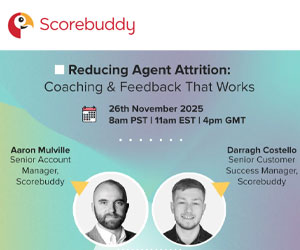Previously, I have looked at the way in which Ikea, whether they knew it or not, had drawn heavily on behavioural science in the design of their stores.
Why does behavioural science matter?
It matters because it shapes the memories and feelings we take away from an experience. It has implications for how, as customers, we rate the quality of the service we have received, the people serving us and how we view, overall, the company we are buying from. In short, it shapes our perception of a company’s brand. So executives who are responsible for the design and management of customer interactions should be very interested in what we can learn from behavioural science.
So, what can we learn?
Here are some of the key principles, along with some of the myths, which executive teams should consider in designing and managing the interface with their customers:
Principle 1: Finish strong
Most people believe that the beginning part of a service encounter is critical. (“You don’t get a second chance to make a first impression”). Wrong! Whilst you do not want to create such a poor start that the customer decides not to enter your store/explore your web site/or wait on the phone to speak to your call-centre team, you are much better creating an acceptable start followed by an experience that builds and ends on a high. People will remember and favour an experience that improves over time rather than one that starts strong and flat lines or tails off. A poor ending usually dominates a person’s overall perception.
The dealer who services my car understands this principle very well as they return my newly serviced car to my door, washed, cleaned inside and smelling sweeter than it has done all year.
Principle 2: Get bad experiences over early
As customers we tend to remember significant moments rather than every single detail of an experience. Sequence matters – the highs and lows and the order in which they appear.
Get bad experiences over early (and combine them) so that they do not dominate the customer’s recollection of the entire experience. Again the dealer who services my car understands this principle too. After I drop my car off, usually within an hour of leaving it, I get a call with the bad news – that I need new (and expensive) tyres and brake pads in addition to the routine elements of the service.
Principle 3: Creatively manage the waiting process
Getting waiting time right is a big issue for companies these days. Retail stores and call centres are awash with statistics expressed to two decimal places on how long their customers are made to wait. Armed with this data, the goal for many companies is to ‘engineer’ the shortest possible wait time for customers.
Here is the myth. Customers do not pay a lot of attention to queuing time unless it is much longer or much shorter than they were expecting. Reducing the call wait time for customers from 30 seconds to 20 seconds probably doesn’t make much difference to most of us. The key question is how can we shape customers’ perception of the waiting process?
The answer: in a number of ways, the most important of which is to engage the customer whilst they are in the queue. Disney is great at this. We wait in line for a ride at their theme parks for 30 minutes and because of the way they keep us informed and entertained, we end the day saying what a fantastic day we had.
If customers are not engaged they will have a lower wait time threshold, which is why I get irritated in Marks & Spencer if I have to wait in line for more than three minutes.
Waiting in line to pay in a retail store is a potentially bad experience that the retailer cannot position earlier, because the customer has not chosen the products they are going to buy. Or can they? Some of the supermarkets in the UK have introduced ‘self-scanning’, which enables those customers happy to scan their items as they walk the store and then pay at the end at a specially designed, self-service, check-out to do so. The result: reduced queues at the regular check-outs; self-scanning for those who have a secret desire to work in a supermarket; lower costs for the supermarket, and all achieved with no increase in pilferage rates.
Principle 4: Spread the pleasure
People have different reactions to bad versus good experiences. We like bad experiences to be over quickly (which is why we said in principle 2, get them over early and combine them) and we like good experiences to last.
Back to Disney. By design they makes the rides in their theme parks short, based on the knowledge that the customer would prefer two 60-second rides to one that lasted 120 seconds (despite the wait time). Two shorter rides compared with one longer one creates the feeling of a fuller, more enjoyable theme park day for the customer.
Principle 5: Give the customer choice
The mere fact that as customers we are given a choice – even in relation to bad parts of the experience – increases our satisfaction levels. My car dealer who rang me up to tell me I needed new tyres said I could replace them now, even though the existing tyres had two months’ life left in them, or return the car in two months’ time and have them replaced then. I didn’t like having to pay the bill but I did appreciate being in control of my options.
Principle 6: Reinforce your brand
Executives responsible for the customer interface – through whatever channel the customer uses – should reinforce the underlying proposition as well as the look, feel and tone of the company’s brand. Aligning peaks in the customer experience with brand values, highlighting rituals the organisation is known for and dramatising the experience are all ways of creating a more memorable experience for customers.
Virgin Atlantic does this really well. Its business class lounge has golf simulators and music sound booths which personify the sense of fun that is central to the Virgin brand.
In the world of customer experience, the only thing that matters is the customers’ perception. And, as IBM concluded in a recent research study, “Even in the most product-focused environments, the person-to-person experience was twice as important in driving customer satisfaction as any other factor.”
In the next post we are going to turn our attention to people. We know that successfully implementing a customer experience strategy and sustaining it depends on the whole organisation and the development of a customer focused culture. So what does it take to engage people across the organisation and to bring about the behavioural changes required?
Author: Guest Author
Published On: 18th Oct 2016 - Last modified: 6th Feb 2019
Read more about - Archived Content




























